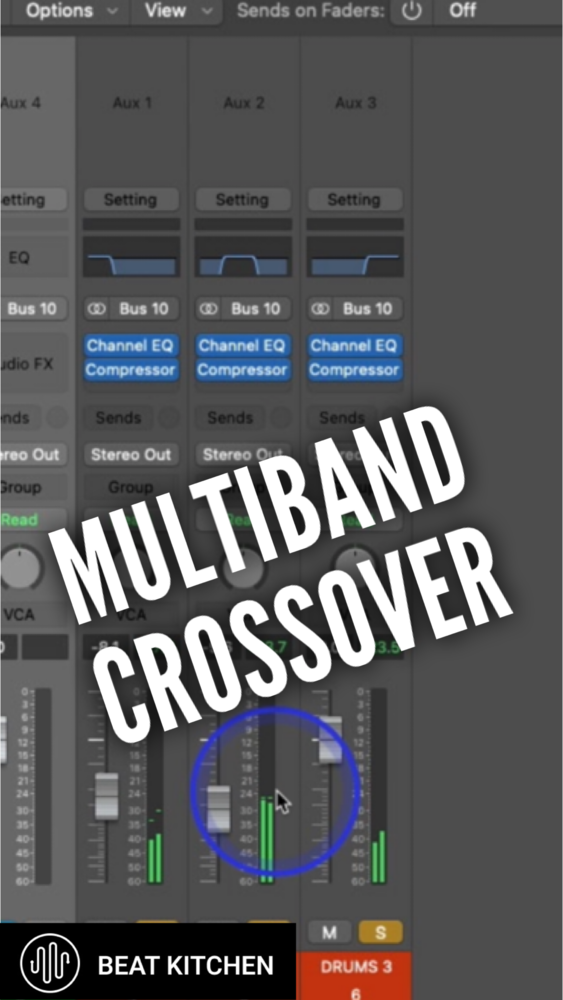You can expect to have a hard time understanding what a multiband compressor is if you don’t know what a compressor is, but you should also be familiar with a crossover network. Crossover networks show up behind the scenes. Like in this loudspeaker where we don’t want the tweeter to bother trying to play the low-frequency stuff.
Crossover networks starts with a series of EQs to separate the low from the high, usually to send them different places. Check out these drums. We’ve got kick, hi-hat, and snare all baked into one recording.
But if we duplicate these drums on three channels and band limit each of them, we can split them apart and then recombine them and end up with something that sounds a lot like what we started with. If you’re thinking these three faders remind you of the graphic EQ on your parents’ hi-fi system, you wouldn’t be far off. Add a separate compressor to each of these bands, and you’ve effectively built your own multiband compressor, as evidenced by the gain reduction triggering at different times on different channels.
And while in this example the faders are acting like makeup gain, in a multiband compression unit, all of this control lives under one roof. Share this post with someone who belongs in a Beat Kitchen class.

